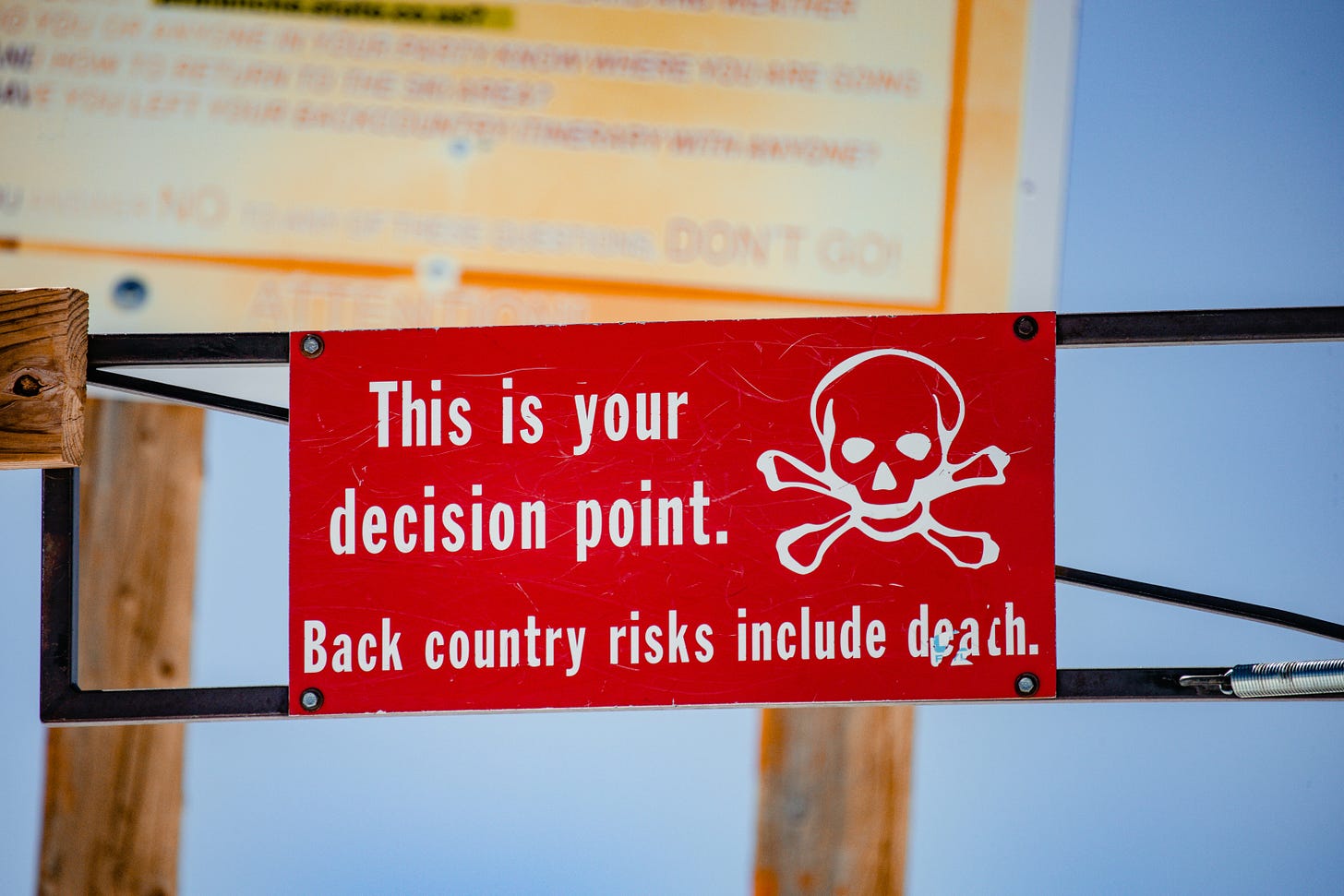Make the #&% Decision, Already
The ability to make high-quality decisions, quickly, is an essential skill for leaders
Thanks for reading Some Guy Named Rae … I’m so grateful for your continued support! If you like today’s post, please pass it along to a colleague (or boss) who might benefit from it. 😉
What makes a good leader? If you’ve been following along, you know that authenticity and inclusiveness are high on my list of qualities that a good leader should possess.
Add to that, decisiveness. The ability to make high-quality decisions, quickly, is key to effective leadership.
While it sounds easy, I’ve seen many leaders struggle with making decisions … even at a place like Amazon, which requires and rewards leaders who have good instincts (Are Right, A Lot) and move quickly (Bias for Action).
Why is decision-making so difficult?
Act too quickly and independently and you risk missing critical information and alienating your team. Spend too much time gathering information and seeking consensus and you also risk alienating your team, as well as getting mired in minutia that’s extraneous to the decision at hand.

Effective decision-making is an art form that requires a careful combination of often conflicting actions that include …
Gathering input. You could make decisions without gathering information and input from those around you, but I don’t recommend it. We all have blind spots and gaps in our knowledge. Leverage the collective wisdom of your team to ensure you’re considering as many options and ideas as possible.
Balancing feelings and data. Sometimes a decision just feels right, other times you’ll have (or need, or want) data to support it. Sometimes you’ll make a decision entirely on what the data shows, other times you’ll want to consider the effects of a decision on those it impacts—how will this decision make someone feel?
Moving quickly. Get comfortable with making decisions based on incomplete information. We often treat every decision like it’s critical and irreversible when in reality, many decisions are two-way door decisions (i.e., they can be reversed if needed). Target 70-80% information to make your decision. It’s highly unlikely you’ll ever have complete information anyway, and you’ll lose first movers advantage if you wait longer to make decisions.
Pushing decision-making downstream. Sometimes the best decision is to create space for others to make the decision, instead. Build a team and culture where decision-making is pushed down to the person or team nearest to the decision that needs to be made. Then stand back, let them decide, and—this is key—support their decision and their ability to make it, no matter what.
Bringing everyone along. Decision-making often doesn’t end with the decision itself. It can also require educating others about the decision and rationale behind it, supporting the decision to colleagues across the organization, and/or holding steadfast to the decision in the face of dissent.
Easy, peasy—right? I know, I know …
Effective decision-making is an art form
that requires a careful combination of often conflicting actions.
… it’s much easier said than done. But there are strategies you can use to help infuse these practices into your decision-making process:
Build a decision-making framework that outlines which decisions are made at which level and by whom,
Create a checklist to evaluate if a decision is a one-way or two-way door decision,
Set a window of time for information gathering to support decision-making, and
Make a practice of putting each decision and the reasons behind it in writing.
So … what are you waiting for? With these decision-making practices and strategies in hand—go ahead and make that decision, already.
What did I miss? Share your decision-making strategies and practices in the comments, below. I’d love to hear what works for you!



I’ve thought about decision making by leaders way too much over the last few years. I’m sure there’s some research to find about this, but stress also impacts our ability to make decisions. I’ve witnessed it (and experienced it myself) that when leaders become overextended and stressed, the ability to make those quick, solid judgments even with the best frameworks becomes impaired or impossible.